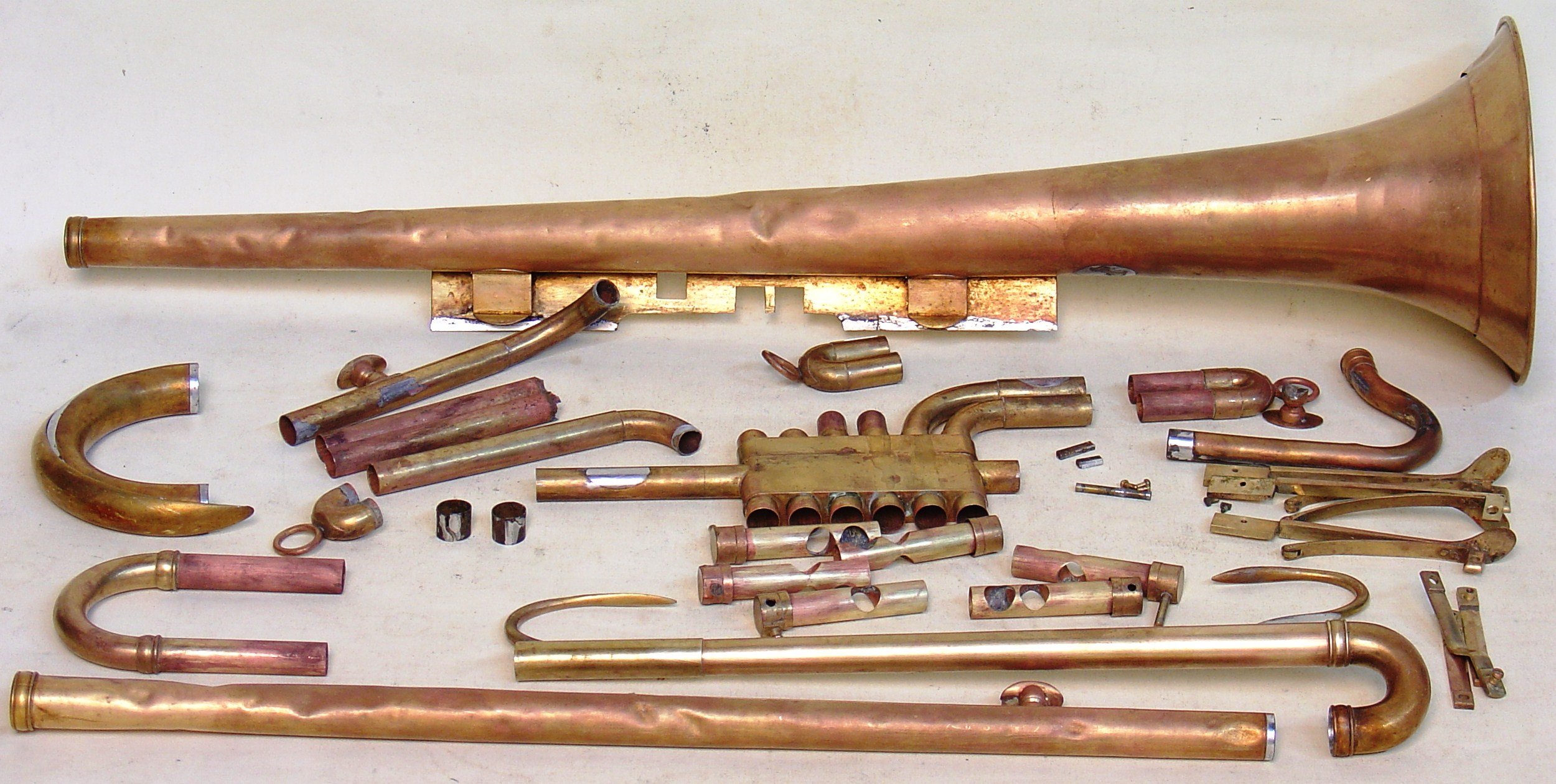Alto Trombacello by Graves & Co.
Brass instruments with valves were still a novelty in the early 1840s when this sort of instrument was first gaining popularity in the US. The prototypes for this instrument with double piston valves were first made in the previous decade in Austria and similarly proportioned instruments in France and England utilized Stoelzel valves as we are accustomed to seeing on cornopeans or cornets a pistons. The main weakness, compared with Saxhorns and other later valve instruments was the very small bore diameter (.425") which limited the volume and quality of tone.
This alto horn was made by Graves & Co. of Winchester, New Hampshire in about 1845, part of a “family” of small bore instruments with double piston valves. Included were small trumpets, known as post horns in Eb and Bb, the altos in Eb, tenors in Bb and basses in F. The origins of the name "trombacello" is not known, but it was used by Graves, Harvey and Alan Dodworth and other Americans at that time including a few composers. It likely expresses the idea of instruments with the range of the trombones, but with the darker timbre of the cello.
To further confuse the issue, some of the same authorities tended to use the terms "ebor (or hibo) corno" and "neo cor" describing Eb alto instruments. Bob Eliason, our premier authority on early American brass instruments, has concluded that this instrument should be called "alto trombacello" along with the tenor in Bb and bass in F. The terminology for sizes is the same as that for the trombones. American makers were late in producing these, probably not before 1840, and the Saxhorns and cornets dominated the brass bands within a few short years. This fact of history makes surviving examples extremely rare.
There are only 29 instruments with double piston valves made in the US known at this time. There are only three other altos similar to this, four tenors and one bass in F, all made by Graves & Co. in Winchester except for one tenor made by Allen & Co in Norwich, Connecticutt. The best known alto is in the Henry Ford museum. Other US makers of instruments with double piston valves were E.G. Wright and Isaac Fiske.
This instrument came to light in 2007 in an antiques auction in Sacramento, California and now resides in Mark Elrod's collection.
The restoration was straightforward, being in a better state of preservation than it first appeared to be. Aside from many dents, it had several splits in the tubing. The most difficult to patch was the curved part of the mouthpipe. This instrument is still quite playable, although as expected, is restricted by its small bore.
The last photo is of a Bb bass trombacello that I restored in 1990 for Mark Jones, which now is in the collection of the National Music Museum.
Graves tenor trombacello in original case.











